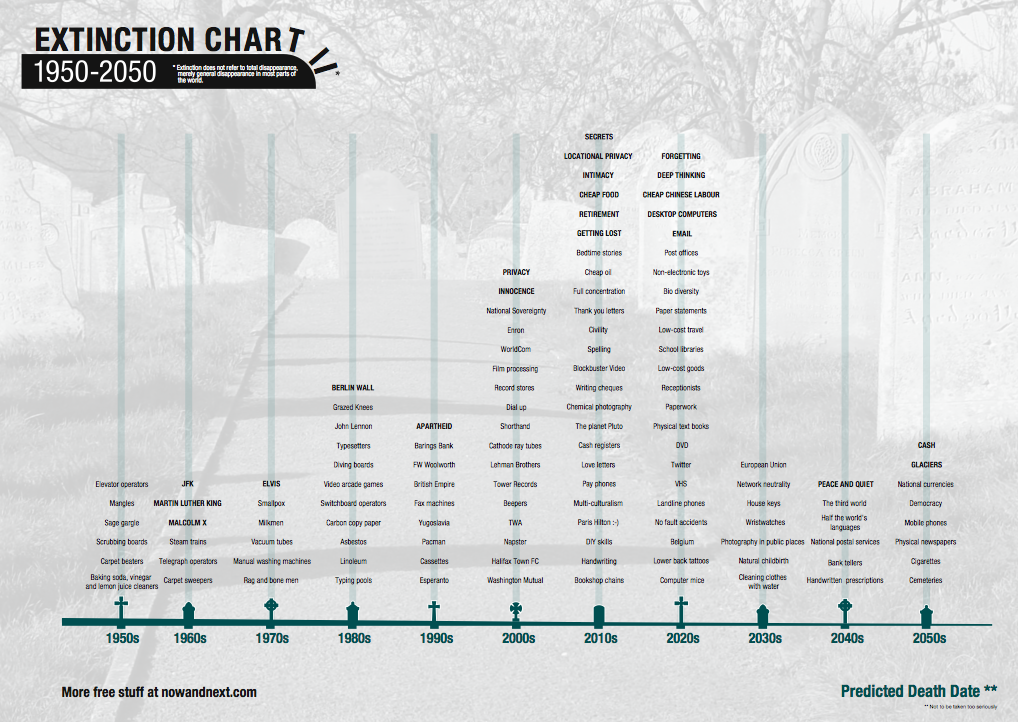
Half-life is a term often associated with chemical elements to explain the amount of time it takes for its contents to reduce to half the original amount. It can also be associated with technology, meaning the amount of time it takes for a piece of technology to be considered “old” or “extinct.”
When Apple releases its new iPhone, or a tech wiz develops the next social media craze, we never think about how short technology’s life cycle is. Wilson and Paterson talk about the rapidly evolving terminology surrounding the world of technology in their article The Anthropology of Online Communities. They are reluctant to use certain words to describe the concepts they talk about because in a few years, it may be called something else, or may not exist entirely.

If we take Apple, for example, and look at the timeline in which iPhones were released, we see that starting from the year 2007 when the very first iPhone was announced, there has been a new model released every year. Software updates for the phones have been released even more frequently. As soon as a new product comes out, the former model is considered “old” – technology has a pretty short lifespan. This lifespan will continue to grow shorter and shorter because there is a competitive atmosphere between developers to be the next one to develop the next tech craze. Although this constant development of technology can be beneficial to people and society, the lost of culture associated with the technology is a shame.
People in older generations always comment on how millennials will never experience the “convenience” of floppy disks or the excitement of dial-up connections. It’s interesting to think that we might have to explain to our children and grandchildren the days when we had to carry around credit cards. Or when we had to interact with people in the store when we wanted to order food.
The thought of not being able to walk into your favorite Starbucks every morning and have the barista remember your order and greet you by name is a little saddening. The loss of culture associated with the loss of technology is saddening. But I guess that’s the price we pay for technological advancement.
Ironically after finishing this post, a lady walked into Panera, where I was working, and said: “Oh…they don’t have those kiosk things here.”
Sources:
https://theiphonewiki.com/wiki/Timeline
http://www.businessspectator.com.au/article/2011/6/8/technology/new-technology-half-life
http://nowandnext.com/PDF/Extinction%20Timeline%202.pdf
http://upload.wikimedia.org/wikipedia/commons/f/fa/IPhone_5.png